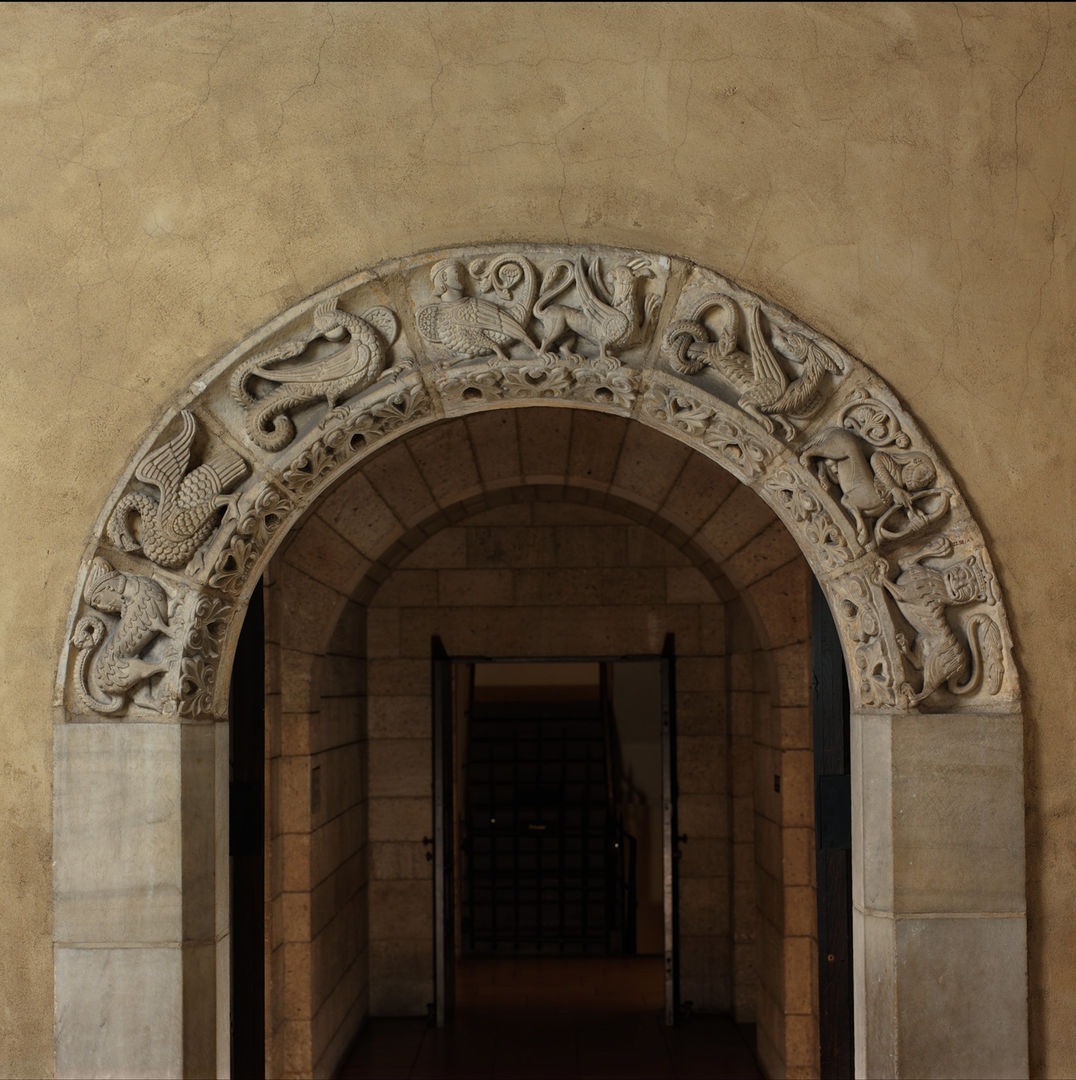Medieval Beasts and Bestiaries

Narbonne Arch, about 1150–75. Languedoc-Rousillon, France. Marble; 40 x 74 in. (101.6 x 188.0 cm). The Metropolitan Museum of Art, New York, John Stewart Kennedy Fund, 1922 (22.58.1)
Collection Areas: European Art, Medieval (The Met Cloisters)
Subject Areas: English Language Arts, Visual Arts
Grades: Elementary School
Topic/Theme: Animals in Art
Goals
Students will be able to:
- recognize and interpret the use of animals as symbols in medieval art;
- synthesize the features of several animals into a composite creature with special powers drawn from its attributes; and
- communicate the special qualities of their figure through writing.
National Learning Standards
English Language Arts
NL-ENG.K-12.4 Communication Skills
NL-ENG.K-12.5 Communication Strategies
NL-ENG.K-12.6 Applying Knowledge
NL-ENG.K-12.12 Applying Language Skills
Visual Arts
NA-VA.K-12.1 Understanding and Applying Media, Techniques, and Processes
NA-VA.K-12.3 Choosing and Evaluating a Range of Subject Matter, Symbols, and Ideas
NA-VA.K-12.4 Understanding the Visual Arts in Relation to History and Cultures
NA-VA.K-12.6 Making Connections between Visual Arts and Other Disciplines
Common Core State Standards
English Language Arts
CCSS.ELA-Literacy.CCRA.SL.1 Prepare for and participate effectively in a range of conversations and collaborations with diverse partners, building on others' ideas and expressing their own clearly and persuasively.
CCSS.ELA-Literacy.CCRA.W.3 Write narratives to develop real or imagined experiences or events using effective technique, well-chosen details and well-structured event sequences.
Questions for Viewing
- Take a close look at one of the creatures. What do you notice?
- Why might an artist choose to combine parts of many different animals?
- What might these different animals symbolize?
- Why might someone have wanted to decorate their doorway with creatures like these?
- Where might we see animals like these today?
- What kind of creatures would you choose to decorate your own space? Why would you choose those creatures?
Activity
Activity Setting: Classroom or Museum
Materials: Drawing paper, pencils, crayons or markers
Subject Areas: English Language Arts, Visual Arts
Duration: 60 minutes
Create a short list of animals and jot down some of their key features (e.g., elephant: big ears, long nose, large size). Consider the special qualities each feature offers. With this list in mind, fold a sheet of paper into thirds and draw the head of an animal in the top section. Pass the paper to your neighbor, who will draw a body in the center section and then hand the paper to a third person, who will finish with the feet or tail. As you work, fold the paper back so each section is completed without looking at the others. Open up the finished drawing and consider the special powers these features suggest. Write a description of your beast or create a story exploring how they use their talents. See if your classmates can match each of the written pieces with the creature that inspired them.
Resources
Department of Medieval Art and The Met Cloisters. "Animals in Medieval Art." In Heilbrunn Timeline of Art History. New York: The Metropolitan Museum of Art, 2000–. (October 2001)
Hassig, Debra, ed. The Mark of the Beast: The Medieval Bestiary in Art, Life, and Literature. New York: Garland, 1999.
"Narbonne Arch [French] (22.58.1)." In Heilbrunn Timeline of Art History. New York: The Metropolitan Museum of Art, 2000–. (October 2006)
Norris, Michael. Medieval Art: A Resource for Educators. New York: The Metropolitan Museum of Art, 2005. Download the resource.
Pre-Visit Guide for Teachers: The Art of Medieval Europe (PDF)
Objects in the Museum's Collection Related to this Lesson
Dragon, after 1200. Burgos, Spain. Fresco; 31.32.2a: 89 x 132 in. (226.1 x 335.3 cm); 31.38.2b: 48 x 132 in. (121.9 x 335.3 cm). The Metropolitan Museum of Art, New York, The Cloisters Collection, 1931 (31.38.2a, b)
The Unicorn in Captivity, 1495–1505. South Netherlandish. Wool warp with wool, silk, silver, and gilt wefts; 144 7/8 x 99 in. (368 x 251.5 cm). The Metropolitan Museum of Art, New York, Gift of John D. Rockefeller Jr., 1937 (37.80.6)
Lion Aquamanile, about 1400. Nuremberg, Germany. Copper alloy; 13 1/8 x 13 3/8 x 4 3/4 in. (33.3 x 34 x 12.1 cm). The Metropolitan Museum of Art, New York, The Cloisters Collection, 1994 (1994.244)
Author: adapted from Medieval Art: A Resource for Educators; affiliation: The Metropolitan Museum of Art, 2005